#flat river stone pavers
Explore tagged Tumblr posts
Text
DC Metro Natural Stone Pavers Landscape

Inspiration for a mid-sized traditional partial sun backyard stone landscaping in summer.
#drystone wall#underground rain water storage system#urn fountain#vegetables and herbs in containers#large selection of ground covers#cooper arbor#flat river stone pavers
0 notes
Text
Membrane Roofs - How They Stay in Place

Wondering what keeps a membrane roof from blowing off in a storm? Knowing how membrane roofing systems are fastened or adhered to your structure will keep you from stressing over your roof when severe weather strikes.

newimageroofingatlanta.com gathered essential information about membrane roofing types, benefits, drawbacks, adherence methods, and maintenance programs.
Membrane Roofing Systems
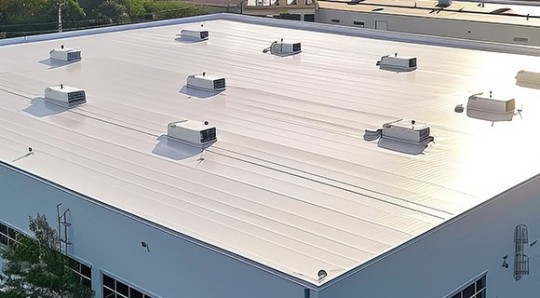
Each membrane roofing type offers distinct advantages and drawbacks based on material composition, climate suitability, cost, and installation requirements.
1. EPDM (Ethylene Propylene Diene Monomer)
Benefits:
Highly resistant to UV radiation and ozone
Performs well in both hot and cold temperatures
Easy to install and maintain
Flexible and long-lasting
Drawbacks:
Black color absorbs heat, which can increase cooling costs
Vulnerable to punctures from sharp objects
May shrink over time if not installed properly
2. TPO (Thermoplastic Polyolefin)
Benefits:
White reflective surface reduces energy costs
Resistant to mold, tears, and punctures
Heat-weldable seams create a waterproof bond
Lightweight and environmentally friendly
Drawbacks:
Durability can vary depending on the manufacturer’s quality
Newer material, so long-term performance is still under review
It can become brittle in cold weather if improperly installed
3. PVC (Polyvinyl Chloride)
Benefits:
Excellent chemical and grease resistance
Welded seams provide superior waterproofing
High reflectivity helps reduce heat buildup
Proven track record in commercial applications
Drawbacks:
More expensive than EPDM and TPO
It can become brittle over time in colder climates
Environmental concerns regarding plasticizers used during manufacturing
4. Modified Bitumen
Benefits:
Durable and puncture-resistant
Easy to repair with torches or adhesives
Ideal for roofs with heavy foot traffic
Good resistance to temperature extremes
Drawbacks:
Installation often requires open flame or hot asphalt
Less flexible than single-ply systems
Shorter lifespan compared to EPDM or PVC
How Membrane Roofs Stay in Place
Membrane roofs, often used on flat or low-slope roofs, remain secure through specific installation methods engineered to resist wind uplift and external forces. The method chosen depends on the membrane, climate, building structure, and budget. Below are the most common techniques:
1. Mechanical Fastening
This method involves physically anchoring the membrane to the roof deck using screws and metal plates. Fasteners are placed at regular intervals, typically within membrane seams, which are then overlapped to hide and protect them.
Advantages:
Cost-effective
Fast installation
Suitable for various temperatures and weather conditions
Limitations:
Higher potential for air infiltration
It can be extremely noisy during strong winds
It may require more maintenance at seams and fastener points
2. Full Adhesion

In a fully adhered system, installers apply contact adhesive to both the membrane and substrate, creating a continuous and secure bond across the entire roof surface.
Advantages:
Excellent resistance to wind uplift
Watertight seals reduce leaks
Enhances energy efficiency by minimizing air pockets
Limitations:
Requires dry, clean conditions for proper bonding
More expensive than mechanically fastened systems
Adhesive application may extend installation time
3. Ballasted Installation
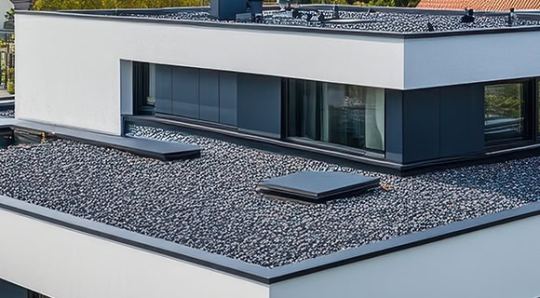
Ballasted systems involve laying the membrane loosely over the insulation and securing it with heavy materials (gravel, pavers, or river stones). The weight holds the membrane in place and shields it from weather and UV rays.
Advantages:
Simple and fast to install
Very durable with added thermal mass
Easily removable for repairs or roof access
Limitations:
Adds significant weight to the structure
It can be difficult to detect leaks beneath the ballast
Not ideal for high-wind zones or buildings with low load capacity
Additional Membrane Reinforcement Methods

Besides the principal anchoring methods, membrane roofs include several features that enhance their longevity and resistance to uplift and leaks:
Seam Sealing: Seams are critical points in roofing. For TPO and PVC, seams are heat-welded; for EPDM, seams are bonded using rubber adhesive or seam tape. Proper sealing ensures waterproofing and structural integrity.
Flashing: Flashing around roof edges, vents, drains, and penetrations forms a continuous barrier against water intrusion and wind damage.
Edge Reinforcement: Fasteners are often added along roof perimeters and penetrations to secure vulnerable areas and improve resistance during storms or high winds.
Preventing Leaks with Roof Maintenance

Commercial membrane flat roofs are straightforward but still require attention at times. Regular inspections and proactive maintenance can prevent costly damage and extend the lifespan of the entire roof system.
New Image Roofing Atlanta offers commercial roof maintenance programs designed to:
Identify early signs of wear or damage around boots, seals, and flashing
Reapply or repair flashing and sealants
Clear debris that could cause pooling/ponding water
Document roof conditions for warranty and insurance purposes
Schedule preventative maintenance to avoid unplanned downtime or repairs
A well-maintained roof can last significantly longer, and proactive care reduces emergency service costs.

Key Considerations for Adhering Membrane Roofing
Selecting the correct method for adhering membrane roofing systems to substrates depends on multiple variables assessed during planning and design.
1. Roof Structure and Load Capacity:
Not every building can handle the weight added by a ballasted system. Before installation, engineers must evaluate whether the structure can support the chosen method.
2. Climate Conditions:
Regions with high winds or extreme weather require stronger adherence methods, like fully adhered or mechanically fastened systems. Ballasted systems may not be ideal for areas that experience hurricanes.
3. Energy Efficiency Goals:
White membranes (TPO and PVC) reflect sunlight and reduce heat gain, which contributes to energy savings. Fully adhered systems offer better insulation performance by eliminating air gaps.
4. Installation Environment:
Fully adhered roofs require specific temperature and moisture conditions for adhesives to cure properly. Mechanical fastening may be a better choice in colder or damp climates.
5. Maintenance and Accessibility:
If the roof requires frequent access, a ballasted or mechanically fastened system may be easier to inspect and maintain. Fully adhered roofs are best for minimal foot traffic to preserve membrane integrity.
Careful evaluation of these factors ensures not only proper installation but also long-term durability and performance.
Keeping Your Membrane Roof in Place
In this article, you discovered essential information about commercial membrane roofing types (benefits and drawbacks), adherence methods, and maintenance programs.
Membrane roofing systems provide long-lasting, weather-resistant protection when selected and installed. Whether choosing mechanical fastening, full adhesion, or ballast, each method plays a key role in ensuring roof stability.
Failure to understand how secure membrane roofing systems are will leave you paranoid about your roof every time the wind blows.
Sources: panamacity.gov/DocumentCenter/View/3187/3533_en_VersiFleece_PVC_FullyAdhered_System_Sheet?bidId= nps.gov/crps/tps/roofingexhibit/roofingtoday.htm hud.gov/sites/dfiles/OCHCO/documents/1037L.pdf
New Image Roofing Atlanta
2020 Howell Mill Rd NW Suite 232 Atlanta, GA30318 (404) 680-0041
To see the original version of this article, visit https://www.newimageroofingatlanta.com/membrane-roofs-how-they-stay-in-place/
#atlanta commercial roofer#commercial roofer atlanta ga#commercial roofing atlanta#flat roof#low slope roof#commercial roofer#emergency roof repair#Ballasted Membrane Roof#Fully Adhered Membrane Roof#Mechanically Fastened Membrane Roof
0 notes
Text
Creating Stunning Gardens with Decorative Stone Options Available in Lubbock, TX
Creating a stunning garden is not merely about planting flowers and mowing the lawn; it’s about crafting an aesthetic experience that can elevate your home and offer a sanctuary for relaxation. One of the essential components of this creative endeavor is the use of decorative stones. In Lubbock, Texas, landscape supply options are abundant, making it easier than ever to find the perfect materials to enhance your outdoor space.
In this comprehensive guide, we’ll explore various decorative stone options available in Lubbock, TX, along with landscaping materials, hardscaping supplies, and tips to help you create a breathtaking garden that reflects your personal style.
Understanding Decorative Stones: A Vital Component for Your Garden
Decorative stones landscape materials shop serve multiple purposes in gardens. Landscape supply Lubbock TX They provide a natural aesthetic appeal, assist in drainage, and can even reduce weed growth. With numerous options available in Lubbock's landscape supply stores, selecting the right type can be overwhelming.
The Role of Decorative Stones in Landscaping
Aesthetic Appeal
Decorative stones add color and texture to your garden design.
Functional Benefits
They improve drainage and reduce erosion.
Weed Control
A layer of decorative stones can prevent weeds from taking root.
Types of Decorative Stones Available in Lubbock 1. River Rock
River rock is smooth and rounded, often used for pathways or as ground cover. This type of stone comes in various colors and sizes.
2. Crushed Granite
Crushed granite provides a more rustic look and is ideal for walkways or driveways. Its durability makes it an excellent choice for high-traffic areas.
3. Flagstone
Known for its flat surface, flagstone is often used for patios or stepping stones. It comes in various shapes and sizes.
Choosing the Right Decorative Stone
When selecting decorative stones for your garden:
Consider the overall design theme. Think about functionality—do you need drainage? Choose colors that complement your plants. Exploring Landscape Supply Options in Lubbock, TX
Lubbock offers a variety of landscape supply stores where you can find everything you need for your gardening project.
Top Landscape Supply Stores in Lubbock Stone Yard Specializes in decorative rocks and bulk mulch. Hardscape Supplies Offers pavers for sale along with retaining wall blocks. Bulk Sand and Gravel Suppliers Ideal for larger projects requiring sand or gravel bases. Finding Quality Landscaping Materials
When searching for landscaping materials in Lubbock:
Look for suppliers with good customer reviews. Ask about bulk discounts if you're purchasing large quantities. Utilizing Hardscaping Materials to Enhance Your Garden
Hardscaping includes non-plant elements like paths, walls, and structures that provide structure to any gard
0 notes
Text

Retaining Walls with Purpose: How Missouri Homeowners Can Elevate Their Landscape Design
If you’ve ever driven through neighborhoods in St. Louis, O’Fallon, or even hilly areas like Wildwood or Eureka, you’ve likely noticed homes with elegant, tiered yards or leveled patios cut into slopes. Chances are, these homeowners are making great use of a strategic landscaping feature: retaining walls.
While they might seem like just another outdoor structure, retaining walls play a crucial role in both landscape design and the long-term stability of your yard — especially here in Missouri, where elevation changes, stormwater runoff, and clay-heavy soil are part of everyday life.
In this article, we’ll cover how retaining walls work, when you need one, and how they can beautifully complement other outdoor upgrades like grading and paver patios to create a fully functional and stunning outdoor space.
What Are Retaining Walls — And Why Are They So Popular in Missouri?
A retaining wall is a rigid structure that supports soil laterally so it can be retained at different levels on two sides. In everyday terms, it helps hold back earth on a slope and prevents it from sliding forward.
In hilly regions like St. Charles County or neighborhoods near the Missouri River, retaining walls are almost essential. They help you make sloped yards usable by:
Creating level platforms for patios or lawns
Preventing soil erosion during heavy rains
Managing water runoff
Adding structure and design to your landscape
They’re not just practical — they’re a chance to enhance curb appeal. Whether you choose natural stone, interlocking concrete blocks, or modern poured concrete, retaining walls can be designed to complement your home and landscape design goals.
The Missouri Terrain: Built for Walls That Work
Missouri has no shortage of terrain challenges. For homeowners in O’Fallon, Chesterfield, or Troy, sloped backyards are common. You may be dealing with water washing out mulch beds, uneven patches of yard that are impossible to mow, or flooding around your home’s foundation.
This is where a landscape designer specializing in grading and retaining wall installation makes a big difference.
For example:
In O’Fallon’s Thornbury community, tiered retaining walls are often used to transition between street-facing front yards and lower garage-level entries.
In Ballwin, homeowners may build decorative retaining walls in the front yard to elevate flower beds and highlight the home’s foundation.
In Wentzville, larger retaining walls might be used to create flat zones for children’s play areas or garden beds.
Retaining walls aren’t just a solution — they’re an opportunity to rethink how you use your space.
How Grading and Retaining Walls Work Together
Proper grading and retaining walls go hand-in-hand. Grading controls how water flows over your property. Retaining walls stop that water from causing structural damage, erosion, or mudslides.
Let’s say you want to build a paver patio in your backyard in St. Peters, but the slope is too steep to lay it flat. A contractor might first grade the land to reduce slope severity, then build a retaining wall to hold back the elevated soil. The newly created level area becomes a perfect platform for your patio.
This approach:
Keeps your patio stable
Prevents puddling or water intrusion
Creates aesthetic tiers and levels
Adds long-term value to your property
It’s all about understanding how the land wants to move, and designing around it — something Missouri-based landscape teams are trained to do.
Designing Retaining Walls to Complement Paver Patios
Homeowners across St. Louis are increasingly opting for integrated outdoor living spaces — think paver patios with seat walls, fire pits, and retaining walls that double as raised planters.
Retaining walls can be more than functional:
Built-in seating: Add a short wall around the patio edge to serve as permanent bench seating.
Raised flower beds: Use a decorative wall to contain a garden that doesn’t spill into your entertainment area.
Multi-level design: Create layers in your yard for visual depth — especially helpful on sloped lots in Eureka or High Ridge.
In regions like Lake St. Louis, where HOA guidelines may influence backyard upgrades, stone retaining walls and earth-tone pavers are often selected to match the architectural style of the neighborhood.
Popular Retaining Wall Materials for Missouri Homes
The beauty of retaining walls lies in the range of material options, each with its own aesthetic and price point:
1. Interlocking Concrete Blocks
Durable and easy to install, these are perfect for functional garden walls or tiered terraces in suburban neighborhoods like Dardenne Prairie.
2. Natural Stone
Great for rustic or high-end looks. In areas like Wildwood, they complement wooded lots and homes with stone façades.
3. Timber Walls
More cost-effective but less durable long-term. Often used for small walls in Fenton or St. Ann.
4. Poured Concrete or Veneered Walls
Sleek and modern. Ideal for homeowners in Kirkwood or Webster Groves looking for a contemporary aesthetic.
The material you choose should align with your overall landscape design plan, budget, and long-term maintenance preferences.
Do You Need a Permit for Retaining Walls in Missouri?
It depends on your city and the wall height. In many St. Louis County municipalities, any wall over 3 to 4 feet requires a permit and, often, engineering approval. This is for safety and drainage compliance.
Local tip: In O’Fallon, MO, retaining walls over 4 feet must include structural engineering, especially if they’re near property lines or slopes. Working with a licensed landscape contractor ensures your design meets all local codes.
Combining Retaining Walls with Other Landscaping Features
Here’s where the magic happens — integrating your wall into a bigger picture. Consider combining:
Retaining walls + Paver patios: Turn a sloped backyard into a level entertaining space with fire pit, seating, and garden edges.
Retaining walls + Grading: Create multiple usable levels — a dining area, lawn, and play zone — all stabilized and draining properly.
Retaining walls + Lighting: Add built-in LED lighting for safety and ambiance, perfect for evening parties in your St. Charles backyard.
These combinations aren’t just functional — they increase property value, boost curb appeal, and support how Missouri families use their yards.
Missouri Lifestyle, Missouri Design
From family cookouts to kids running in the sprinkler, we Missourians love our outdoor space. Whether you’re in Creve Coeur, Troy, or the historic districts of St. Louis, your yard can reflect the best of Missouri living — comfortable, natural, and welcoming.
Retaining walls support that lifestyle by:
Creating more usable flat yard space
Protecting your property investment
Adding structure to your outdoor design
Plus, when combined with features like paver patios, native plants, and LED outdoor lighting, your yard becomes an extension of your home — not just something you mow once a week.
Final Thoughts: Build for the Land You’re On
In Missouri, great landscape design isn’t about forcing nature to comply — it’s about working with it. That’s why retaining walls, grading, and drainage are essential tools for turning outdoor challenges into opportunities.
If you're planning an upgrade to your yard in St. Louis, O’Fallon, or anywhere in between, talk to a local landscaping expert who understands how our terrain, weather, and community lifestyle shape every design decision.
0 notes
Text
Interlocking Paver Block Machine
Interlocking paver block machine, also known as interlocking paving block machine or interlocking block machine, produces blocks with interlocking structure by using raw materials such as stone powder, river sand, stone, water, fly ash, cement and other raw materials, which are pressed and molded by machinery. These interlocking blocks, due to their unique interlocking design, can effectively enhance the overall stability of the masonry and resistance to scouring, which is especially suitable for slope protection, bank protection and other projects. The working principle of the interlocking paver block machine is as follows: after mixing the raw materials according to the proportion, it is fed into the mold through the conveying device; the mold presses the raw materials under pressure; the formed interilocking paver blocks are taken out through the demoulding device, and can be processed or transported subsequently. During the whole process, the equipment adopts advanced control system to ensure the stability and efficiency of the production process.
Main features of interlocking paver block machine: - Multifunctionality: The interlocking paver block machine can produce a variety of specifications of blocks, including ordinary bricks, hollow bricks, pavement bricks, cement pipes, etc., to meet the needs of different projects. - Efficient and flexible: the interlocking block machine is able to change the molds according to the production demand, realizing diversified production and improving the production efficiency. - Energy saving and environmental protection: Interlocking paving block machine can make full use of industrial wastes such as fly ash, slag, etc. during the production process, which reduces the waste of resources, and at the same time, reduces the production energy consumption. - High product quality: the blocks produced are high density, strong and durable, with flat surface and precise size, which is conducive to improving the construction quality. Easy maintenance: the equipment has a compact structure and is easy to maintain, which reduces the maintenance cost. Application fields of interlocking paver block machine: - Water conservancy project: used in river, canal, lake and other bank protection, slope protection project, as well as drainage canal, spillway bottom lining, slope protection. - Road engineering: in the construction of highway and bridge, the materials such as pavement bricks and reinforced concrete produced by interlocking block machine can improve the construction efficiency and quality. - Construction project: it can be used for the production of blocks for the outer wall, inner wall and floor slab of the building, as well as the production of paving materials in the garden landscape. - Dock project: producing cement pipes, cement wells and other building materials to meet the material demand in dock construction. The price of interlocking paver block machine varies according to brand, model, configuration and other factors. Generally speaking, the equipment of high-end brand has higher price, but stable performance and reliable quality; while the equipment of middle and low-end brand has relatively lower price, but there may be some performance difference. Therefore, when purchasing interlocking paving block machines, it is recommended that users make comprehensive considerations according to their own needs and budgets, and choose cost-effective products. At the same time, you can also consult professional machinery and equipment manufacturers to get more detailed product information and purchase advice.
This resource is from http://www.haomeibatchplant.com/news/interlocking-paver-block-machine.html Should you be interested in, please contact us at: Haomei Machinery Equipment Co.,ltd Whatsapp/Wechat: 0086 181 3788 9531 Email: [email protected]
0 notes
Text
10 Creative Stone Walkway Ideas to Enhance Your Outdoor Space
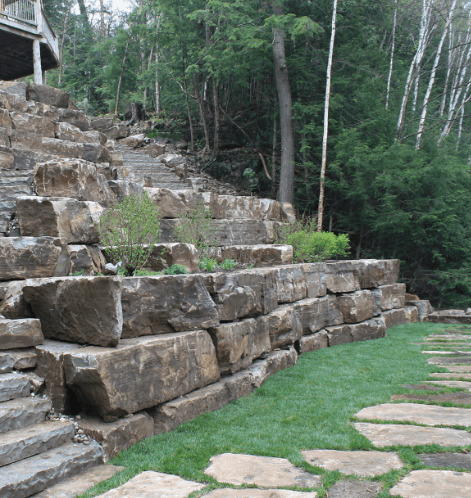
Stone walkways can serve as both functional paths and aesthetic focal points in outdoor areas. Here are ten inspiring stone walkway ideas to enhance your outdoor space:
Natural Stone Pavers
Utilize irregularly shaped natural stone pavers to create a rustic and organic pathway. Their varying sizes and colours add visual interest and blend seamlessly with the surrounding landscape.
Stepping Stones
Incorporate large, flat stepping stones into your walkway design for a charming and whimsical touch. Arrange them in a staggered pattern to create a sense of rhythm and flow.
Cobblestone Path
Opt for timeless elegance with a classic cobblestone path. The smooth, rounded stones provide a durable and traditional option that complements any outdoor setting.
Flagstone Walkway
Choose flagstone for a versatile and durable Stone Walkways solution. Its flat, irregularly shaped pieces can be laid in various patterns, such as herringbone or random ashlar, to suit your style.
Gravel and Stone Mix
Combine gravel with large stone pavers to create a visually dynamic walkway with a natural, textured look. This blend of materials offers both stability and visual interest.
Mosaic Stone Path
Get creative with a mosaic stone path featuring intricately arranged stones of different shapes and colours. This artistic approach adds a unique focal point to your outdoor space.
Japanese Zen Garden Walkway
Embrace tranquillity with a Japanese-inspired stone landscaping surrounded by lush greenery and carefully placed rocks. Incorporate raked gravel or sand for an authentic Zen garden experience.
Border with River Rocks
Frame your stone walkway with river rocks to define the edges and add a touch of contrast. The smooth, rounded stones create a visually pleasing border that complements the ruggedness of the pathway.
Inlaid Pebble Design
Enhance your stone walkway with intricate pebble inlays featuring geometric patterns or natural motifs. This artistic detailing adds texture and visual interest to an otherwise simple pathway.
Interlocking Stone Pavers
Opt for interlocking stone pavers for a modern and streamlined look. Their uniform shape and precise fit create a clean and polished pathway that complements contemporary outdoor spaces.
0 notes
Text
10 Low-Maintenance Rock Garden Ideas for Drought-Affected Areas
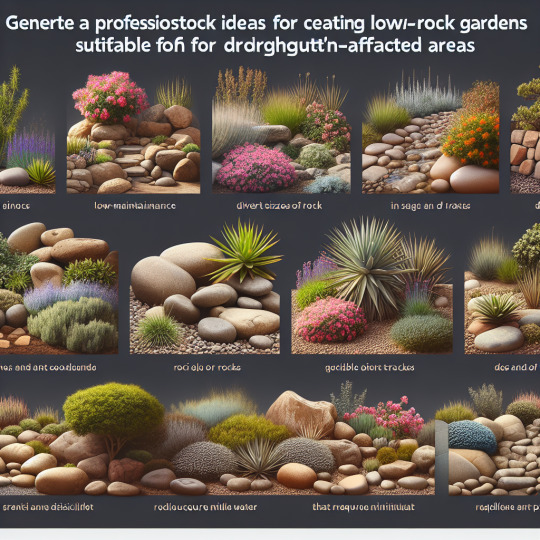
Transform Your Landscape with Xeriscaping
Drought is an ongoing and critical issue in the U.S., affecting millions of acres of crops and millions of people. As the need to conserve water becomes increasingly urgent, homeowners can play a significant role in combatting drought by embracing xeriscaping. Xeriscapes are landscapes that require little water besides what the sky provides, often incorporating native plants.
Not only does xeriscaping help conserve water, but it also adds beauty and personality to any property. In this article, we explore 10 low-maintenance rock garden ideas that are not only environmentally friendly but also visually stunning in arid areas.
youtube
Intersperse Bright Hues and Rough-Hewn Rocks
Let your creativity shine by pairing broad splashes of brightly-hued flowers with craggy, rugged rocks. Create a sprawling terrace garden with alternating sections of ground-cover plants like flowering thyme, phlox, and sedums, and wide, relatively flat rocks that can double as stepping stones during maintenance.
Dig a Petite Pond
Add pizzazz to your backyard with a pint-sized pond filled with fish and floating lily pads. Surround the pond with stones in various sizes, such as large, chunky rocks interspersed with smaller pebbles, to delineate its perimeter and create a visually appealing water feature.
Add Gravel in the Garden
Transform an ordinary flower bed into a visually appealing space by incorporating a decorative bench tucked among flat rocks that are flush with the ground. The contrast between rich, dark mulch and small, multi-colored stones adds depth and visual interest to the area.
Divide and Conquer a Large Lawn
If you have a large lawn, consider dividing it into discrete areas that serve different purposes, such as an herb garden, butterfly or bee garden, or even beehives or a chicken coop. Use large, boulder-like rocks to separate these spaces and create distinct areas within your yard.
Rock That Walk
Create a minimalist rock garden by edging a sidewalk with a narrow border of smooth pebbles. This clean and asymmetrical style adds a touch of elegance to any outdoor space. Complete the look with deep-green, leafy plants that complement the rock border.
Use Lighting to Create an Otherworldly Atmosphere
Transform your rock garden into an enchanting evening scene by incorporating illuminated rocks. During the day, the rocks blend into the background, but at night, they create an eerily beautiful moonscape when softly glowing LED indoor/outdoor orb lights are added.
Pair Stone With Succulents
In drought-affected areas, inorganic materials are often used in larger quantities. Create a balanced and aesthetically appealing xeriscape by combining multicolored pebbles with a solitary palm tree, widely spaced succulents, and a low stone wall. This composition is both visually stunning and water-efficient.
Elevate an Outdoor Space With Stone Steps
If you have a sloping yard, embrace the split-level look by incorporating wide, irregular stone steps. These steps not only define the different levels of your outdoor space but also add visual interest and functionality.
Make a Modern Rock Garden
Create a modern and minimalist rock garden by using precisely pruned shrubs that resemble giant green Rubik's cubes, oversized square pavers, and a tidy rectangle of monochromatic stones. The simplicity of this design makes a bold statement and is perfect for those who appreciate clean lines and simplicity.
Add Some Country-Garden Charm
Create a charming garden path by using midsized slate chips. The horizontally oriented rocks add a touch of country-garden charm and can lead to a wishing well or a cozy seating area.
Create a River-Like Design Through It
Create a meandering river or rocky point effect by incorporating curving lines and seaweed-like tufts of foliage in your rock garden. This design not only adds visual interest but also helps reduce lawn maintenance while catching the eye of visitors.
Keep It Simple With Stones
Create an expansive rock bed that serves as a backdrop for showcasing exquisite plants, rocks, or sculptures. Whether you choose smooth pebbles, snowy-white pea gravel, or chunky creek rocks, a simple surface of stones will enhance the beauty of your displayed items.
Get Creative With a Small Garden
Add drama to a small garden by choosing the right type of landscape rocks. Polished black pebbles or moonlike lava stones can transform an ordinary area into a visually striking space that captures the imagination.
Think Inside the Box
Create a stylized lawn with a deliberately boxy composition. Fill each section with contrasting or complementary materials, such as stones of different sizes and foliage with varying heights, to create a unique and eye-catching "lawn-drian" masterpiece.
Transforming your landscape into a low-maintenance rock garden is not only visually appealing but also a smart move for conserving water in drought-affected areas. By embracing xeriscaping and incorporating rocks into your design, you can create a stunning outdoor space that requires minimal water while adding beauty and personality to your property. Whether you choose to intersperse bright hues with rough-hewn rocks or create a minimalist rock garden with stone steps, the possibilities for creating a stunning rock garden are endless.
Embrace your creativity and take the first step towards a water-efficient and visually appealing landscape.
0 notes
Text
Transform Your Landscape with Low-Maintenance Rock Garden Ideas

Create an Environmentally Friendly and Drought-Resistant Oasis
Drought is a pressing issue in the United States, with millions of acres of crops and millions of people affected. To combat drought and reduce water consumption, homeowners can turn to xeriscaping, which involves creating landscapes that rely primarily on natural rainfall. One popular and visually appealing option is the installation of rock gardens.
These low-maintenance gardens not only add personality to any property but also help conserve water and support native plant life. In this article, we will explore a variety of rock garden ideas that are not only attractive but also well-suited for arid areas.
youtube
Intersperse Bright Hues and Rough-Hewn Rocks
A colorful landscape can bring cheer and vibrancy to any outdoor space. By combining splashes of brightly-hued flowers with rugged rocks, homeowners can create a visually stunning rock garden. This design utilizes ground-cover plants like flowering thyme, phlox, and sedums, interspersed with flat rocks that double as stepping stones during maintenance.
Dig a Petite Pond
A small pond can add a touch of elegance and tranquility to a backyard. Surrounding the pond with a variety of stones in different sizes creates a visually appealing perimeter. Mexican or Caribbean beach pebbles can provide a dramatic effect and enhance the overall aesthetic of the pond.
Add Gravel in the Garden
Adding a decorative bench among flat rocks that are flush with the ground can transform a flower bed. By using rich, dark mulch and small, multi-colored stones, the plants take a supporting role, allowing the contrast between the materials to shine. A few flowering bushes can provide the necessary greenery.
Divide and Conquer a Large Lawn
Large lawns can be overwhelming to maintain, but they offer ample opportunities for creativity. Dividing the lawn into different areas, such as herb gardens, butterfly or bee gardens, or even beehives or a chicken coop, can give purpose to the space. Using large, boulder-like rocks can help delineate these areas and save money on pavers.
Rock That Walk
A minimalist approach to rock garden design can be just as striking as more elaborate styles. A row of smooth pebbles edging a sidewalk creates a clean and asymmetrical look. Pairing this border with deep-green, leafy plants completes the aesthetic.
Use Lighting to Create an Otherworldly Atmosphere
Outdoor living areas take on a different ambiance at night. Illuminated rock garden ideas can create an enchanting evening scene. By strategically placing LED indoor/outdoor orb lights, rocks can blend into the background during the day and transform into a beautiful moonscape at night.
Pair Stone With Succulents
In drought-affected areas, inorganic materials are often used extensively. Using multicolored pebbles, a solitary palm tree, widely spaced succulents, and a low stone wall can create a balanced and visually appealing xeriscape. This design is as lovely as a grassy lawn or a garden in full bloom.
Elevate an Outdoor Space With Stone Steps
A sloping yard can be a challenge, but it also offers opportunities for creativity. Bi-level backyards can be ideal for entertaining or outdoor activities. Using wide, irregular stone steps can define and connect the two distinct spaces, creating an elevated design.
Make a Modern Rock Garden
A modern rock garden can be sleek and minimalist. By using precisely pruned shrubs, oversized square pavers, and a tidy rectangle of monochromatic stones, homeowners can achieve a stunning effect. Choosing marble chips instead of stones can elevate the design even further.
Add Some Country-Garden Charm
A charming garden path can wind its way through an assortment of blossoms and boulders. By using midsized slate chips, the path remains straightforward while adding visual interest. This type of path can lead to a wishing well or a cozy seating area.
Create a River-Like Design Through It
A broad border with gently curving lines and tufts of foliage can resemble a meandering river or a rocky point at the ocean's edge. This design is evocative and helps reduce lawn maintenance. It serves as a remarkable example of xeriscaping and catches the eye of visitors.
Keep It Simple With Stones
A rock bed can serve as a backdrop to showcase exquisite plants, rocks, or sculptures. Smooth pebbles, snowy-white pea gravel, or chunky creek rocks can create a simple and elegant surface that reflects attention back to the displayed objects.
Get Creative With a Small Garden
For smaller spaces, decorative landscaping materials can be used to create dramatic rock garden ideas. Polished black pebbles or moonlike lava stones can add interest and transform an ordinary area into a visually striking space.
Think Inside the Box
A stylized lawn with a deliberately boxy composition can provide a unique twist on traditional landscaping. Contrasting or complementary materials can be used to fill each section, creating divergent effects. This design allows for creativity while maintaining a strict layout.
Rock gardens offer a visually appealing and environmentally friendly solution to combat drought and conserve water. By incorporating various rock garden ideas, homeowners can transform their landscapes into low-maintenance oases that require minimal water consumption. Whether it's creating colorful terraces, adding ponds, or utilizing lighting to create an enchanting atmosphere, rock gardens provide endless possibilities for creativity and sustainability.
0 notes
Text
12 Low-Maintenance Rock Garden Ideas for Drought-Affected Areas
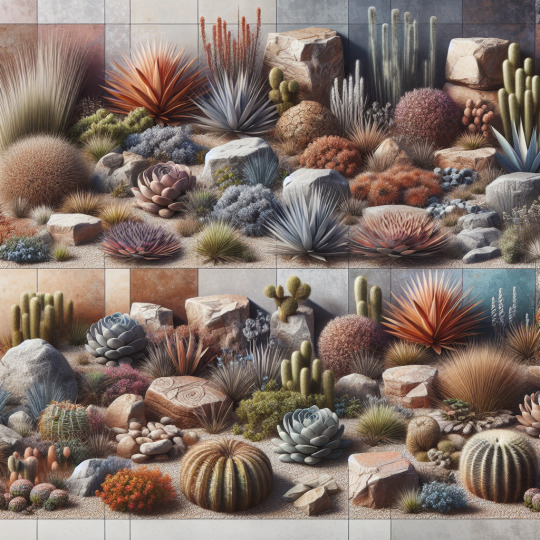
Transform Your Landscape with Environmentally Friendly Xeriscaping
Drought is a pressing issue in the United States, affecting millions of acres of crops and millions of people. As the need to conserve water becomes more urgent, homeowners are turning to xeriscaping as a sustainable solution. Xeriscapes, which feature landscapes that require minimal watering and often incorporate native plants, are an effective way to combat drought and reduce reliance on rainwater.
In this article, we will explore 12 low-maintenance rock garden ideas that are not only visually appealing but also environmentally friendly, making them perfect for arid areas.
youtube
Intersperse Bright Hues and Rough-Hewn Rocks
One way to add a pop of color to your landscape is by pairing brightly-hued flowers with rugged rocks. Create a terrace garden with alternating sections of ground-cover plants like flowering thyme, phlox, and sedums, and wide, flat rocks that can double as stepping stones during maintenance.
Dig a Petite Pond
Add a touch of elegance to your backyard with a small pond filled with fish and lily pads. Surround the pond with stones of various sizes, such as large, chunky rocks mixed with smaller pebbles, to create a visually striking perimeter.
Add Gravel in the Garden
Transform a dull flower bed into a visually appealing space by incorporating a decorative bench among flat rocks flush with the ground. Let the contrast between dark mulch and multi-colored stones take center stage, with a few flowering bushes adding a touch of greenery.
Divide and Conquer a Large Lawn
If you have a large yard, consider dividing it into distinct areas for different purposes, such as an herb garden, butterfly or bee garden, or even space for beehives or a chicken coop. Use large, boulder-like rocks to separate these spaces and save money on pavers.
Rock That Walk
Create a minimalist rock garden by edging a sidewalk with a narrow border of smooth pebbles. This clean, asymmetrical style can be complemented with deep-green, leafy plants or low-water ornamental grasses for a striking visual effect.
Use Lighting to Create an Otherworldly Atmosphere
For those who enjoy spending time outdoors after sunset, illuminated rock garden ideas can create a magical evening scene. Strategically placed LED indoor/outdoor orb lights can transform hefty rocks into an enchanting moonscape.
Pair Stone With Succulents
In drought-affected areas, inorganic materials are often used in xeriscapes. Combine multicolored pebbles with a solitary palm tree, widely spaced succulents, and a low stone wall to create a balanced and visually appealing xeriscape that rivals a traditional lawn or blooming garden.
Elevate an Outdoor Space With Stone Steps
If you have a sloping yard, make the most of it by creating a bi-level backyard. Use wide, irregular stone steps to separate and connect the two distinct spaces, providing a visually stunning design that is both functional and beautiful.
Make a Modern Rock Garden
For those who prefer a minimalist aesthetic, a modern rock garden is the perfect choice. Use precisely pruned shrubs that resemble giant green Rubik's cubes, oversized square pavers, and a tidy rectangle of monochromatic stones to create a simple yet stunning design.
Add Some Country-Garden Charm
Create a charming garden path by scattering midsized slate chips across the surface. This horizontally oriented rock path can lead to a wishing well or a cozy seating area, adding a touch of country-garden charm to your landscape.
Create a River-Like Design Through It
Add a touch of whimsy to your landscape with a border that resembles a meandering river or a rocky point at the ocean's edge. This broad border, with its gently curving lines and tufts of foliage, not only reduces lawn maintenance but also catches the eye of visitors and adds visual interest to your driveway.
Keep It Simple With Stones
Highlight your prized plants or treasures by creating an expansive rock bed. Whether you choose smooth pebbles, snowy-white pea gravel, or chunky creek rocks, a simple surface of stones will draw attention to the exquisite objects on display.
Get Creative With a Small Garden
For smaller spaces, unleash your creativity by choosing the right type of landscape rocks. Consider using polished black pebbles or moonlike lava stones to add drama and interest to an otherwise ordinary area, such as the front steps or mailbox.
Transforming your landscape into a low-maintenance rock garden is not only visually appealing but also environmentally friendly. By incorporating xeriscaping principles and using rocks creatively, you can create a stunning landscape that requires minimal water and is perfect for drought-affected areas. Whether you choose to intersperse bright hues with rough-hewn rocks or create a minimalist rock garden with stone steps, these ideas will help you create a beautiful and sustainable outdoor space.
0 notes
Photo
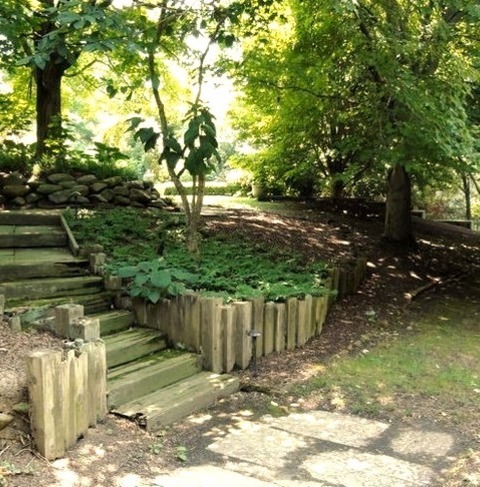
Traditional Landscape - Natural Stone Pavers Photo of a mid-sized traditional partial sun backyard stone landscaping in summer.
#stonehenge homage#irrigation from collected rain water#wooden deck#bluestone patio set in mortar#large selection of ornamental trees#flat river stone pavers#stone fountain
0 notes
Photo
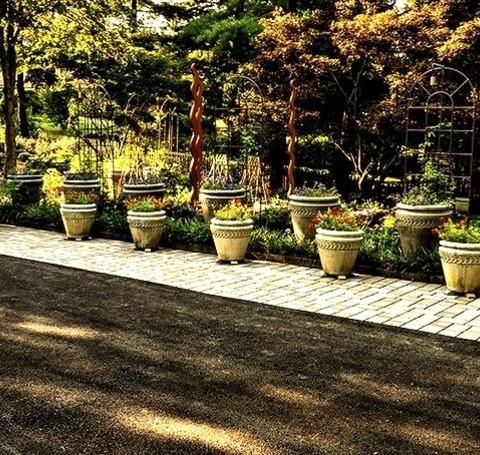
Container Garden (DC Metro)
#Photo of a mid-sized traditional partial sun backyard concrete paver landscaping in summer. stonehenge homage#bluestone patio set in mortar#flat river stone pavers#urn fountain#landscape
0 notes
Text
Art and the Environment
“Part of addressing a complex politics of ecology and its aesthetic reach means critically rethinking current or provincialist terms of debate by foregrounding overlooked actors, actants, voices and constituencies. In examining social, political and environmental conditions of crisis, envisaging a post-humanist method of inquiry towards the long-term development of sustainable solutions does call for the rejection of binaries or polarisations. Yet it must also be pursued on a cross-disciplinary basis that aims to animate serious proposals that reject and rethink the ‘restricted economy’.”
Carolina Caycedo
BE DAMMED (ongoing Project)
In Indigenous cosmogonies of the Americas, all bodies of waters are connected. Rivers are the veins of the planet, their waters associate communities and ecosystems. Be Dammed investigates the effects that large dams have on natural and social landscapes in several American bio-regions. More than 250 large hydroelectric dams are projected or under construction by transnational corporations in Latin America, signifying the transition of public bodies of water into privatized resources. At the same time, the U.S. is the leading country in dam removal, allowing for the restoration of river ecosystems. In Be Dammed, aerial and satellite imagery, geo-choreographies and audio-visual essays intersect social bodies with bodies of water, exploring public space in rural contexts, and conjuring water as a common good.
Conjuro de rios - rio cauca e hidroituango dam

Itaipu river

The Cosmotarrayas
a series of hanging sculptures assembled with handmade fishing nets and other objects, collected during my field research in different riverine communities affected by the privatization of waters in Colombia and Brazil.


YUMA, or the land of friends, El Quimbo Dam
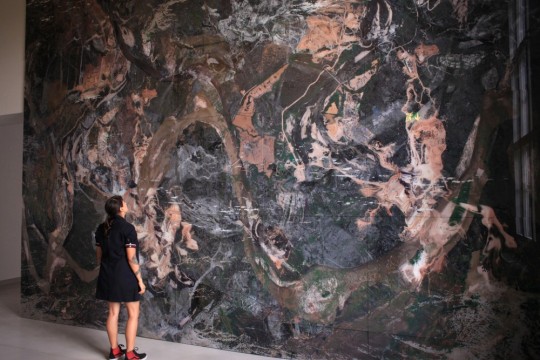
Lygia Clark
Baba Antropofágica
In collective works like «Túnel» or «Objetos relacionais,» Lygia Clark initiates psychic processes of exchange which transform the dichotomy of subject and object. In doing so, she follows the transgressive logic of «devouring» and «vomiting». The reception of «Baba antropofágica» («Cannibalistic Saliva») also relies on the documentary film «O mundo de Lygia Clark,» filmed by Eduardo Clark in 1973. But escaping this phantasmal staging of the body seems almost impossible: kneeling over a guinea-pig-like subject lying on the floor, a figure pulls from its mouth—like spiders do from their bodies—a spittle-drenched thread and spins a cocoon around the reclining figure. The precarious division of subject and object is eliminated by this thread-like weaving, with the gestural webbing of the passive subject completing the inversion of the internal and external. In the retrospective, these interactive aspects might have been what was most convincing. In contrast to Performance and Body Art, Lygia Clark understood herself to be an initiator of processes, and was most successful in this respect when her haptic attempts on orderings were targeted at inter-subjective body politics.



“¿Cuál es entonces la misión del artista?”, decía Clark, “Dar al participante el objeto que no tiene importancia por sí mismo y que sólo la tendrá en la medida en que el participante actúe. Es como un huevo que sólo revela su interior al ser abierto. (…) Es menester que la obra no cuente por ella misma y que sea un simple trampolín para la libertad del espectador-autor. Éste tomará conciencia a través de la proposición que le es ofrecida por el artista. No se trata de la participación por la participación, ni de la agresión por la agresión, sino de que el participante dé un significado a su gesto y de que su acto sea alimentado por un pensamiento, en ese caso el énfasis de su libertad de acción.” (1997: 152-153)
re-enactment
Short film records "Anthropophagic Slobber", proposal by Lygia Clark (1920 - 1988) (re)lived at Clark Art Center (CAC), Rio de Janeiro, Brasil, with Jards Macalé. Direction and screenplay: Walmor Pamplona. By Clark Art Center.
vimeo
she termed relational objects (everyday objects that the artist employed in an attempt used to stimulate the senses)
“Toward the end of her career, Clark coined another term, phantasmagoria of the body, which was also a way of intertwining art and psychotherapy. It’s a practice that deals with the notion of a life within an art object, something that scholars usually dismiss. It was through the discovery of her concept of the “phantasm” that Clark was able to surpass a mere anticipation of sensorial knowledge to enter the realm of actual fulfillment of that knowledge—a concept that differs from the contemporary notion of performance, and moves into the unconscious.
(...)
In Anthropophagic Slobber (1973) the ritualistic aspect of the proposition is crystal clear: a person lies on the floor, arms against her body. She doesn’t wear much. She rests, her eyes are closed. A group of people approach, they come, they kneel. They form a circle around the lying person and put colored threads inside their mouths—the threads are expelled from their lips wet, soaked with slobber. Saliva is stimulation. These people are then like spiders, depositing the webs on the person’s body. The spider can see the prone body—but only her “phantasm” can see the spider. It is within this kind of exercise that the object, a simple thread, becomes, for Clark, a powerful tool for the marriage between body and unconscious knowledge through art. When the person allows herself to become part of this embracing web, the slobber accepts her, she accepts herself.“ (from: https://artwriting.sva.edu/journal/post/lygia-clark-at-moma)
Vogue Germany January 2020
Images of a editorial photo shoot of the Voque Germany of January 2020, inviting artist Katharina Grosse as art director for the editorial fashion part. It’s called : Imagine (our title). She invited a platform of women ‘ Wir machen das’, writers, artists, architects, students, musicians to join the project. Their working field is migration, diversity and refugee movements in conversation with and over ….. The shoot shows divers types of women of different ages and shapes together in a shoot having conversations, also exposed in writings in the magazine.
https://wirmachendas.jetzt/en/mission/



WIR MACHEN DAS – and this is who we are
WIR MACHEN DAS (WE ARE DOING IT) arose from a network of 100 women from arts and culture, science, journalism and public life under the association wearedoingit e.V. in 2015.
As a non-profit organisation we use various projects in the fields of arts and public relations to advocate for support, participation and the recognition of diversity in the context of refugee movements and migration.
Our Aims
We address all people not as “the needy”, but with regard to their expertise, because diverse perspectives enrich local discourses. Together we aim to improve career prospects, educational offers and networking opportunities. We foster individual resources and create opportunities for exchange. In this way, we bolster the involvement of people from zones of war and conflict. Together we are shaping a future in which immigration and diversity are seen as an opportunity and asset.
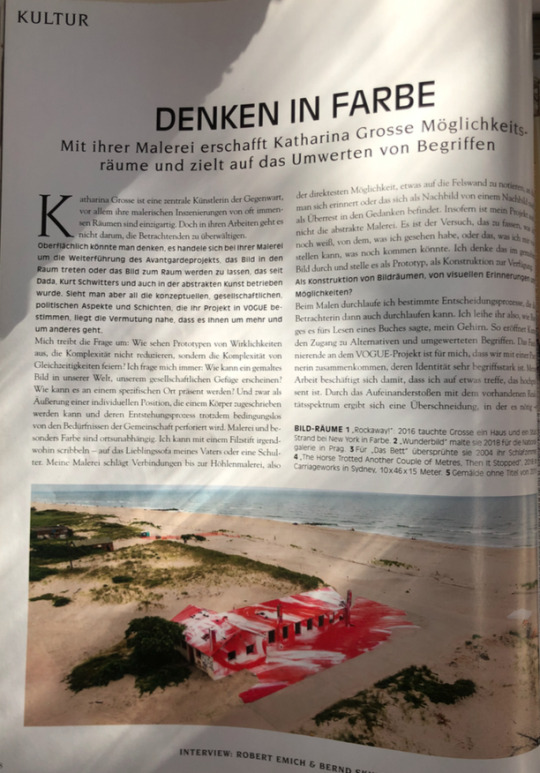








Plastic T-shirt bag invented to save the chopping of trees for paper bags in 1960

The inventor of the plastic bag Sten Gustaf Thulin. He intended the opposite with his invention:
American and European patent applications relating to the production of plastic shopping bags can be found dating back to the early 1950s, but these refer to composite constructions with handles fixed to the bag in a secondary manufacturing process. The modern lightweight shopping bag is the invention of Swedish engineer Sten Gustaf Thulin.[1] In the early 1960s, Thulin developed a method of forming a simple one-piece bag by folding, welding and die-cutting a flat tube of plastic for the packaging company Celloplast of Norrköping, Sweden. Thulin's design produced a simple, strong bag with a high load-carrying capacity, and was patented worldwide by Celloplast in 1965. As his son Raoul said later, Sten believed that durable plastic bags will be not single-used but long-term used and could replace paper bags which need chopping of trees.[7][8]
Source: https://en.wikipedia.org/wiki/Plastic_shopping_bag
https://www.independent.co.uk/environment/plastic-bags-pollution-paper-cotton-tote-bags-environment-a9159731.html
https://disposableamerica.org/the-plastic-bag/inventor-sten-gustaf-thulin/
Nzambi Matee

A nairobi-based 29-year-old entrepreneur and inventor — is the founder of a startup that recycles plastic waste into bricks that are stronger than concrete. called gjenge makers ltd, her company initiated following the development of a prototype machine that turns discarded plastic into paving stones. one day at the factory means 1,500 churned plastic pavers, prized not just for the quality, but for how affordable they are.
‘it is absurd that we still have this problem of providing decent shelter – a basic human need,’ said matee. ‘plastic is a material that is misused and misunderstood. the potential is enormous, but its after life can be disastrous.’
before creating gjenge makers ltd, nzambi matee majored in material science and worked as an engineer in kenya’s oil industry. in 2017 she quit her job to start creating and testing pavers, which are a combination of plastic and sand. she gets the waste material for free from packaging factories and also buys it from other recyclers. through experimentation, she understood which plastics bind better together and then created the machinery that would allow her to mass produce them.

‘we must rethink how we manufacture industrial products and deal with them at the end of their useful life,’ said soraya smaoun, who specializes in industrial production techniques with UNEP. ‘nzambi matee’s innovation in the construction sector highlights the economic and environmental opportunities when we move from a linear economy, where products, once used, are discarded, to a circular one, where products and materials continue in the system for as long as possible.’
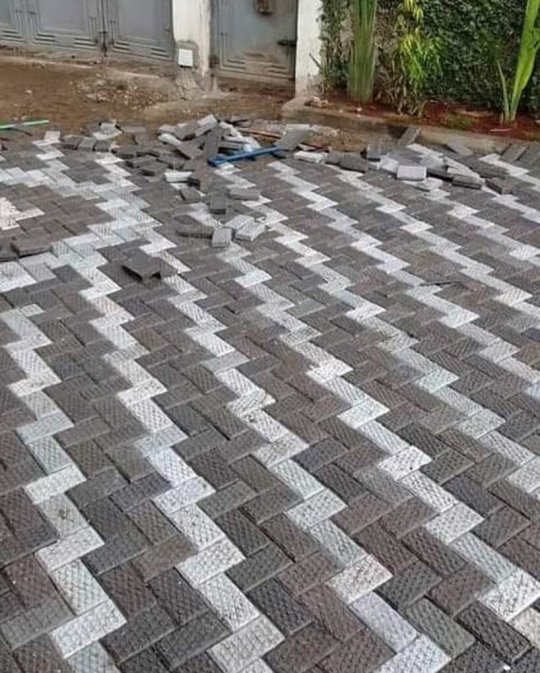
Pierre Huyghe - Zoodram
Zoodrams: large aquariums with marine ecosystems, that embody the logic of the exhibition, in particular Zoodram 4 (2011) in which a crab turned a resin mask of the Sleeping Muse (1910) by Constantin Brancusi into its living habitat.


Zoodram 5 (After Sleeping Muse by Constantin Brancusi), 2011, a glass tank that provided living quarters for different species of crabs that cannibalize each other, a none-too-subtle metaphor for human rapaciousness.
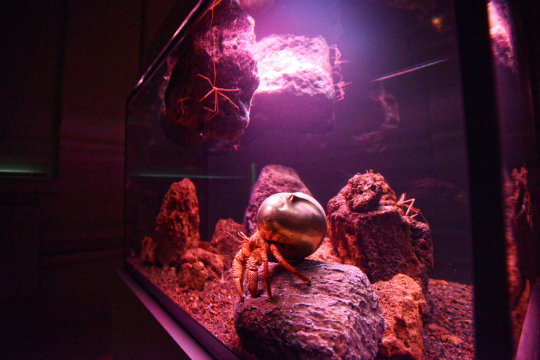
The tank is a repeated object in many of Huyghe’s works. They featured prominently in his retrospective, and a massive fish tank currently sits on the roof of the Metropolitan Museum as part of the Roof Garden Commission. Huyghe’s tanks are filled with strange, beautiful creatures. On the roof of the Met are tadpole shrimp, while inside the tanks in the retrospective were hermit crabs. The tank is an enclosed space. The viewer stands outside it, watching the creatures engage in their everyday activities. The tank is a lens through which we can better see Huyghe’s overall project. In an interview with Emily Nathan for Art in America, Huyghe stated:
The work is not “displayed” under a narrative — that’s a system I avoid. I could not imagine a chronological order, either. As you say, most of what I have done is construct situations that happen within a given body. Every one is a constellation network of process, all sorts of heterogenous and anachronistic things come together or are associated within a constructed situation, and so it is difficult to present them in a site where they were not originally, or to organize them in a linear way.
Pierre Huyghe says that life is the core interest of his practice: “I’m interested in how to quantify the different variations of being alive…how to intensify the presence of things.” Many of his performance, film, and installation pieces employ a range of living creatures—insects, plants, animals, and human beings—in order to explore their behavior and interactions. These works become laboratories for articulating complex social phenomena, the precarious distinction between fiction and reality, and contemporary belief systems.
Pawel Althamer

The sculptor Pawel Althamer, who had a cameo in After Nature with a pair of flayed bodies, has brought an entire parade of the undead to Expo 1. He and neighbours from his apartment block in Bródno, Poland, each created a life-sized alter ego, modelled out of scrap metal and technological trash. Like zombies from an apocalyptic nightmare, the figures in “Bródno People” march sightlessly through a huge gallery, an ungainly procession of solid ghosts that recalls Rodin’s “Burghers of Calais”.
Mel Chin
Revival Field
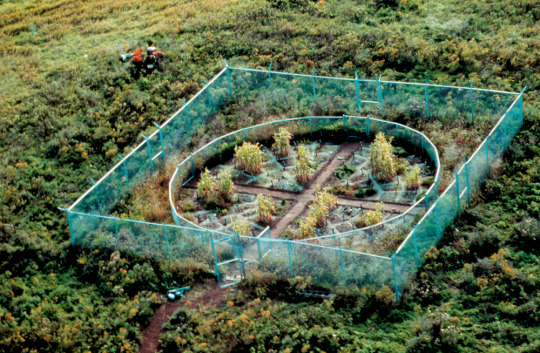
1991-ongoing plants, industrial fencing on a hazardous waste landfill an ongoing project in conjunction with Dr. Rufus Chaney, senior research agronomist, USDA
Revival Field began as a conceptual artwork with the intent to sculpt a site’s ecology. 1993 marked a successful conclusion to the first phase of this collaborative effort. The initial experiment, located at Pig’s Eye Landfill, a State Superfund site in St. Paul, Minnesota, was a replicated field test using special hyperaccumulator plants to extract heavy metals from contaminated soil. Scientific analysis of biomass samples from this field confirmed the potential of “Green Remediation” as an on-site, low-tech alternative to current costly and unsatisfactory remediation methods. Despite soil conditions adverse to metal uptake, a variety of Thlaspi, the test plant with the highest capacity for hyperaccumulation, was found to have significant concentration of cadmium in its leaves and stems.
vimeo
In Mel Chin’s Revival Field FIG. 3 soil is detoxified through the use of ‘hyperaccumulator’ plants in a dumping ground in Minnesota, demonstrating the need for speculative ecological proposals.
Thomas Hirschhorn
Jumbo Spoons and Big Cake



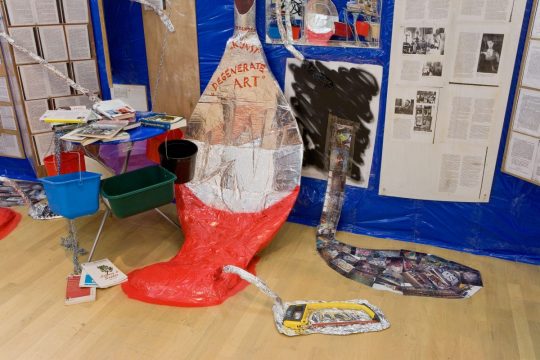
At first glance, Thomas Hirschhorn’s monumental installation Jumbo Spoons and Big Cake resembles a kind of documentation centre turned upside down, filled with papers, chained books, piled archives and photographs. In the centre, the jarring presence of a monumental cake surrounded by twelve giant spoons creates a metaphor on the state of the world today, and on the end of many 20th century utopias. Reminiscent of popular ‘souvenir spoon’ trinkets, the spoons portray individuals or entities that the artist associates with failed utopias: Mies van der Rohe, Rosa Luxemburg, Malevitch, Nietzsche, Venice, China, the Moon, firearms, fashion, the Nazis’ 1937 exhibition of “degenerate art,” Swiss Rolex watches, and the Chicago Bulls basketball team.
Tejal Shah
Between the Waves

Landfill Dance by Tejal Shah FIG. 5 is a video installation that involves several professional dancers dressed as quasi-mythical creatures, striking poses and moving in synchronicity in an unnamed mass landfill site in India. The work portrays ‘neither a neoliberal optimism nor paralysing despair’, but instead draws on the ‘potential of the bodies to coexist with this environment’, as is part of Boetzkes’s broader thesis that artists have demonstrated the need for an ‘intensive “working through” of the site’ and waste (pp.121–25). How, if at all, the work deals with people that notoriously have little choice but to rummage and work through mass garbage sites on a daily basis is unattended to.
Tejal Shah: Landfill Dance is part of the larger five-channel video installation, Between the Waves. Each channel also functions as a stand-alone piece. I first worked on channel 1, which is a longer film that forms the backbone of the installation.
“I am a big fan of contemporary and folk dance, with immense reverence for the medium. I have been eagerly awaiting an appropriate opportunity to collaborate with dancers. Finally, I decided to work with contemporary dance in this project to create seemingly nonsensical movements within the setting of a landfill to think about the futility of our gestures of sense making and recuperation in the Anthropocene (with a sense of humour of course!).” (https://huismarseille.nl/interview-tejal-shah/)
vimeo
vimeo
Olafur Eliasson
“Riverbed was for the Louisiana Museum, whose architecture is from a period where the seamlessness between inside and outside was introduced, as were a number of modern illusions of openness,” he says by way of preface. “Within this very contemplative museum, but also this very well functioning exhibition machine, I wanted something that would almost have the volume and scale to destabilise the museum a bit, pressure it. So I wanted it to look almost like a rock garden, but also to have a sense of a mudslide. Brutal, deathlike; it’s almost an alien landscape, and really it’s there to introduce destabilising qualities that one experiences outside – you’re walking on a slope, keeping your balance, recomposing your walking to fit the landscape – but you don’t really notice, you take them for granted. So I don’t only move the landscape in but also the microconflicts: suddenly we don’t take them for granted. This is what is interesting: the experience, the activities you do, also become exhibited. It’s as much about the interaction as about the actual plateau, the platform, on which people are walking.”



5 notes
·
View notes
Text
Stone Dust Supplier in Gurgaon
Stone Dust Supplier is a waste material of stones obtained from crusher plants. It can also be used as a partial substitute for natural river sand in concrete. The use of stone dust in concrete not only enhances the durability of concrete. But furthermore conserves the natural river sand for the coming generation. Stone Dust Supplier is broadly used as a setting bed for any of the several manners of stone pavers. Utilized by homeowners in small construction projects.
It can be smoothed to create a very flat surface and also it is strong. And adequate to bear the weight of stone pavers, which can be relatively noteworthy. And if you are looking for reasonable quality stone dust for your construction project in Gurgaon. Then take the services of Rodi Dust Marketing & Distributions Pvt. Ltd. Rodi Dust is one of the best stone dust suppliers in Gurgaon. We have also a variety of stone dust and other construction material of exceptional quality at a reliable cost.

How we work:-
Choosing the appropriate variety of construction materials is the most significant step to ensuring stability and long-term construction result. But it needs proper knowledge to choose the material of adequate quality and quantity. Hence, the professional team of Rodi Dust Marketing & Distributions Pvt. Ltd is here to help you. Our experts will dedicatedly assist you in for opting the best concrete and appropriate stone dust along with all construction materials and other services you need for building your dream project.
Our services include:-
Materials used in structure and building applications have exclusive strengths as well as failing, and there are frequently trade-offs among these individuals. At RodiDust, we cater a wide range of services like:
Building Material supplier
Contractor
Interior designer
Modular kitchen manufacturer
Modular wardrobe manufacturer
Architects
Painter
False ceiling
Why go for Rodi Dust Marketing & Distributions Pvt. Ltd:-
Rodi Dust provides the best construction material and has great collaboration with the best construction material brands. In the same way, we also provide all ranges of stone dust you want for your construction. We not only emphasize the quality of material but are also dedicated to the integrity and standard of service we furnish to our valued customers. The great team and exceptional manner of transport system make us the best building material supplier in Gurgaon and Delhi.
Note: Also Please Like Share and Comment on Facebook Page
#white stone dust price#what is the cost of stone dust#stone dust suppliers new delhi#stone dust suppliers in west delhi#stone dust suppliers in south delhi#stone dust suppliers in hyderabad#stone dust suppliers in gurgaon near me#stone dust suppliers in gurgaon contact number#stone dust suppliers in gurgaon#Stone dust suppliers#stone dust price per ton#stone dust price near me#stone dust price in india#stone dust price in gurgaon#stone dust price in delhi#stone dust price in bangalore#stone dust for plants#stone dust cost per ton
0 notes
Text
Task 1.7 Reflection
For task 1.7 we had a collaborative task in class, and I worked alongside Hannah H. We were given the materials clay and paper to create a work that explores interval and repetition. We were able to choose whatever site we wanted to respond to, and we initially chose some of the concrete pavers, within the Chauvel place gardens, but ended up changing our mind as we worked on our installation.
We made many round balls of clay in different sizes, threw them against the table so they would form a flat bottom, and then pressed seed pods we had found into the clay. The impression of the seed pods created a unique indentation in the clay, along with a series of cracks and breaks in the clay from the impact.We then found ways to arrange our forms through stacking to resemble the stacks of stones you'd find on mountains or by rivers.
We wanted to find a way to arrange them that explored site and interval but also had a sense of chaos. Eventually, we found that we wanted to relate them to the stones already present within the park, and give them this sense of evolving life.
As you can see in the images below, we arranged them so that they are coming out of the bed of stones, and slowly gaining shape and mass and then they gain these paper circles around them. Eventually they explode out into a randomised formation rather than stuck in this interval.
Considering that each event has some element of growth to it as they move further away from the from the rock bed, it seems as though they are gradually gaining life and consciousness. Additionally, we gave them a larger interval in between each event to create this sense of growth and a sense of energy.
It was quite a interesting process to work alongside another Artist to create a work like this, As we haven't created any work together before, and being able to react to a site or react to the material alongside another person can be tricky, but I think we we did it quite effectively and it worked out quite well. I'm fairly happy with the outcome. I think it was a good learning experience, to work with these these new materials and with these new ideas of interval and repetition
0 notes
Text
The Basics of Modern Rugs
If you are looking for a place where to buy modern rugs for your home or office, look no further than Melbourne, Australia. This city is renowned as the cultural hub of Australia, and is an absolute shopper's paradise. With its diverse and vibrant history, there is a wealth of history to be uncovered here. In addition, the natural beauty of this area is second to none. From the stunning ocean views and lush vegetation to its amazing National Park, there are plenty of opportunities for tourists to explore this region on foot.
As you travel through this historic area, you will be captivated by the richness of this city's history. Start by taking a tour of some of the historical sites including Lockhart House, St. James Cathedral, Royal Botanic Gardens and Museum, John James Clark House and Victoria Barracks, which were all constructed during the 19th century. These buildings will give you an excellent insight into the lifestyle and culture of Melbourne in the early days. After visiting these sites, head down to Southbank Park to take in the stunning views of the Yarra River. The beauty of this park is a sight to behold alone.
Once you feel like you've explored enough area, head over to Princes Bend Shopping Centre to pick up a souvenir. Here you will be spoilt for choice as there are antiques and furniture shops to peruse, as well as a plethora of designer boutiques and department stores. After a quick stop at Woolworths, you can return home with a whole range of garments and kitchenware that you won't need after returning home. After all, it is unlikely that you will be shopping in the same location every day of the week.
It is possible to create a theme in your home with the colours and patterns that are available in this region. To start with, you can have rugs that match the decor of any room in the house. For example, if you have a more traditional setting, you may wish to choose traditional brown and white hobbled rugs. If you live in a newer house or flat, then you can use bright and bold colors to create a focal point. In fact, by using bold colors, you can draw attention away from a less attractive feature of the room.
There are other design elements to consider as well. By incorporating a variety of different textures and patterns, you can create a look that is unique to your home. For instance, you can have an area rug that has an Oriental feel to it. This means that it has a tasseled pattern on it, which would create a dramatic accent piece. You can also create a southwestern vibe in this area by choosing textured hued materials and fabrics such as chenille, denim, and cow hide. For an even more Native American touch, you could go with stone pavers or hand-carved wood.
Of course, there are many more design options, too. When you look at modern rugs in a home or office, they should complement the overall style of the space, not clash. It's important to think about what kinds of material would best complement the design of the walls and furniture. This way, you can get a good balance between functionality and style. By keeping these considerations in mind, you'll be able to find the perfect style of modern rugs in Melbourne.
For more information visit us on https://www.rugaddiction.com.au/

0 notes
Text
painting for house inside

Coastal Coastal Painting Company has been serving commercial clients, homeowners and condominium associations across Florida for nearly 30 years and has become one of the largest repainting contractors. We understand what it takes to address the needs of your community and property.
FIND US THROUGHOUT FLORIDA Serving Broward, Palm Beach, Miami-Dade, Indian River, Martin, St. Lucie, Collier, Lee and Charlotte counties, and the Orlando and Central Florida communities.
For over a decade we have been a trusted authorized Roof-A-Cide® applicator 1. Say good-bye to mildew. 2. Non-toxic: will not harm people, pets or plants. 3. Warranties cover concrete, flat and barrel tile, asphalt shingles and stone coated metal roofs. (Depending on roof tile type warranties will vary between 2-3 years.) 4. the most cost-effective and safe roof cleaning system. 5. Stay on program and never pressure clean your roof again. 6. Low pressure application won’t damage roof tiles. 7. Recommended by GAF, Monier-Life and U.S Tile Roofing Manufacturers.
Add value to your property Give yourself and your neighbors a treat: A fresh, clean and brightly painted property will increase its value; while creating a positive effect on the building residents, as well as the residents in nearby buildings in the immediate area.
Concrete restoration and damage prevention services Coastal Painting Company’s Restoration Division can provide concrete restoration and damage prevention services. These include:
1. Expansion joint systems 2. Balcony Repair 3. Aluminum Rail Installation/Replacement 4. Parking Deck Restoration 5. Above & Below Waterproofing 6. Structural Repairs 7. Concrete Repair/Replacement 8. Paver/Topping Slab Repair/Installation 9. Concrete Walkways 10. Deck Coating Installation 11. Caulking and Sealants 12. Specialty Coatings
Cracked concrete? When concrete settles, cracks, or becomes uneven, you can end up with pooling water, uneven surfaces, and potentially dangerous tripping hazards.
Don’t let your business (or homes) first impression suffer from cracked or uneven sidewalks, driveways, patios, or pool decks. We can offer great solutions to fix and add value to your property.
Save time and money with our maintenance plans for every budget We’ll visit your property annually or semi-annually, and tailor a plan for you.
all in one stop shop. Project Planning and Notification!
Self-contained trucks and trailers We can supply our own water/fire hydrant, and we are metered in each city and county Experienced in traffic control and placement of highly visible safety signage, traffic cones and caution tape
Contact Us
Toll Free: (800) 320-8083 Main: (954) 427-1994 Fax: (954) 427-1966 6820 Lyons Technology Circle, Suite 125 Coconut Creek, FL 33073
More Information: – www.coastalpaintingcompany.com
0 notes